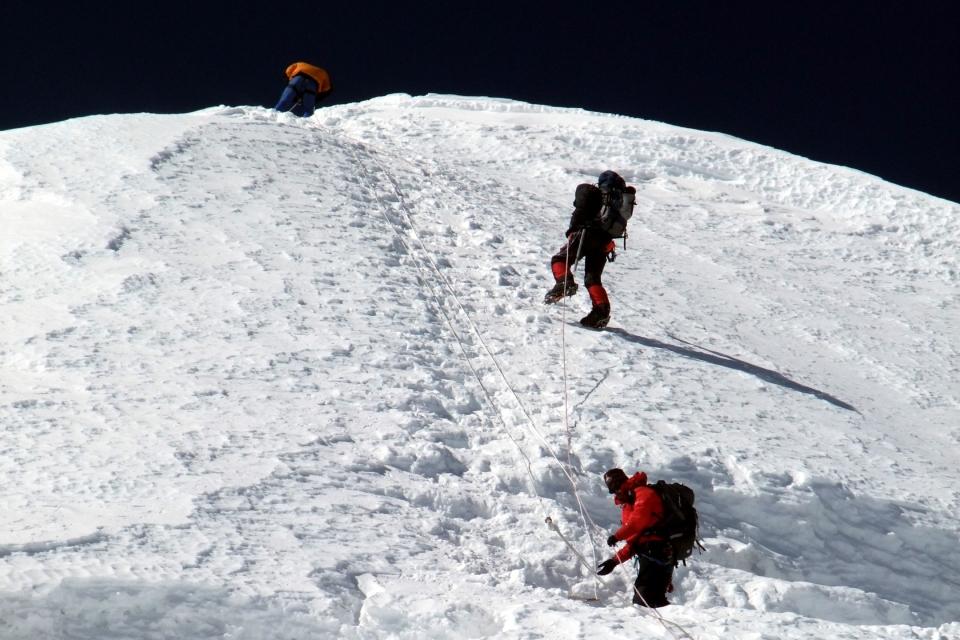Rising majestically at 6,189 meters (20,305 feet) in the heart of the Everest region, Island Peak (Imja Tse) is one of Nepal’s most popular trekking peaks. Known for its distinctive shape resembling an island floating amidst the surrounding glaciers, this peak offers an unforgettable adventure for mountaineers and trekkers seeking to experience the grandeur of the Himalayas.
Whether you are an experienced climber aiming for higher altitudes or a trekker looking to experience your first Himalayan summit, Island Peak provides a perfect mix of challenge, excitement, and breathtaking scenery. This comprehensive guide will cover everything you need to know to plan your Island Peak climb: from location, routes, difficulty, permits, and equipment to safety tips and best times to climb.
Where is Island Peak Located?
Island Peak, also called Imja Tse, is situated in the Khumbu region of eastern Nepal, just south of Everest Base Camp. It lies near the Imja Glacier and offers stunning views of surrounding giants like Lhotse, Nuptse, Ama Dablam, and Mount Everest itself.
-
Region: Sagarmatha National Park, Khumbu
-
Nearest Base: Pangboche or Chhukung Village
-
Altitude: 6,189 meters (20,305 feet)
-
Accessibility: Reachable via Lukla flight followed by a multi-day trek
Its location makes Island Peak an ideal peak for climbers looking to combine trekking in the Everest region with their first technical Himalayan climb.
History and Significance of Island Peak
Island Peak was first summited in 1953 by a British expedition, shortly after Sir Edmund Hillary and Tenzing Norgay conquered Everest. Since then, it has become a training peak for aspiring high-altitude mountaineers, offering a mix of trekking, glacier travel, and technical climbing.
For many climbers, reaching the summit of Island Peak represents both an adventure achievement and a rite of passage in Himalayan mountaineering. Its name, “Island Peak,” comes from its distinctive shape that appears like an island floating amidst the ice and surrounding peaks when viewed from Dingboche.
Altitude & Difficulty Level
Island Peak’s summit at 6,189 meters poses significant altitude challenges, but it is considered a moderate trekking peak rather than a highly technical expedition.
-
Difficulty: Moderate (requires basic mountaineering skills)
-
Technical Sections: Ice climbing, steep snow slopes, crevasse crossings
-
Acclimatization: Proper acclimatization is crucial to prevent Altitude Sickness (AMS)
-
Climbing Duration: Typically 5-7 days from base camp to summit and back
While Island Peak does not require extensive mountaineering experience, climbers must be physically fit and prepared for glacier travel and steep ice slopes.
Island Peak Climbing Route
Common Route via Imja Glacier
-
Lukla to Namche Bazaar: A scenic trek through Sherpa villages, rhododendron forests, and the Dudh Koshi river valley.
-
Namche Bazaar to Dingboche: Gradual ascent for acclimatization with panoramic Himalayan views.
-
Dingboche to Chhukung: Base for Island Peak climb, with a first glimpse of Imja Tse.
-
Chhukung to Island Peak Base Camp (5,087m): Prepares climbers for technical ascent.
-
Summit Day: Early morning climb, crossing glaciers, ladders, and steep snow slopes to reach 6,189 meters.
-
Descent: Return via the same route to Base Camp, then trek back to Lukla.
Scenic Highlights Along the Route
-
Views of Everest, Lhotse, Nuptse, and Ama Dablam
-
Imja and Khumbu Glaciers
-
Traditional Sherpa villages and monasteries
-
Breathtaking Himalayan sunrise and sunset panoramas
Best Time to Climb Island Peak
The optimal climbing seasons are:
-
Pre-Monsoon (Spring): March to May - Clear skies, moderate temperatures, blooming rhododendrons.
-
Post-Monsoon (Autumn): September to November - Stable weather, crystal-clear views, less crowding.
Winter climbs are extremely cold and risky, while monsoon season (June-August) brings heavy snow and slippery conditions.
Required Permits & Fees
Island Peak climb requires:
-
Sagarmatha National Park Permit - Covers trekking and peak climbing in the park.
-
Trekking Peak Permit (issued by Nepal Mountaineering Association) - Specific to Island Peak.
-
Guide and Liaison Officer (LO): Compulsory for safety and coordination.
These permits can be arranged through licensed operators like Best Heritage Tour, making the process hassle-free.
Equipment & Gear Checklist
Climbers should be well-prepared with:
-
Mountaineering boots and crampons
-
Climbing harness, ropes, helmet, ice axe
-
Down jackets, gloves, thermal layers
-
Sleeping bag suitable for -20°C
-
Sunglasses, sunscreen, and trekking poles
-
Water bottles and high-energy snacks
Local guides provide ropes, ladders, and technical support during the summit climb.
Safety Tips for Island Peak
-
Acclimatize properly at Namche Bazaar and Dingboche to avoid AMS.
-
Hire experienced guides to navigate glaciers and technical sections safely.
-
Monitor weather forecasts; summit attempts are best done early morning.
-
Stay hydrated and eat high-calorie meals to maintain energy at high altitudes.
-
Follow Leave No Trace principles to preserve the fragile Himalayan environment.
Why Choose Island Peak Climb?
-
Accessible yet adventurous: Ideal for first-time climbers aiming for a 6,000-meter peak.
-
Spectacular Himalayan scenery: Views of Everest, Lhotse, Nuptse, Ama Dablam, and surrounding glaciers.
-
Cultural experience: Trek through Sherpa villages, monasteries, and Buddhist culture.
-
Training for higher peaks: Island Peak is often a preparation climb for higher expeditions like Mera Peak or Everest.
Conclusion - Climb Island Peak with Best Heritage Tour
Island Peak (Imja Tse) is not just a mountain - it’s a journey into the heart of the Himalayas, combining adventure, culture, and spiritual inspiration. From glacial landscapes and Sherpa villages to the thrill of reaching 6,189 meters, it is an experience every mountaineer and trekker should aim to conquer.
Best Heritage Tour offers expert guidance, comprehensive logistics, and 24/7 support for Island Peak climbing. Whether it’s your first 6,000-meter summit or part of your Himalayan adventure, our team ensures a safe, rewarding, and unforgettable journey.
Phone: +977-9851149197 / +977-9810043046
Email: info@bestheritagetour.com | bestheritagetour@gmail.com
Website: www.bestheritagetour.com
Office: Thamel Marg, Kathmandu, Nepal
Prepare yourself, take the leap, and conquer Island Peak with the experts at Best Heritage Tour!
Author: Best Heritage Tour
Date: 18th September, 2025




